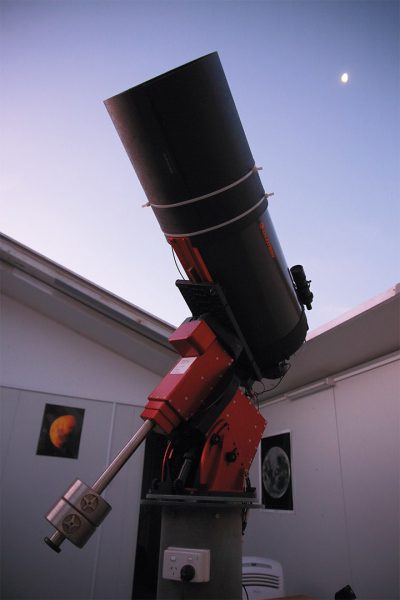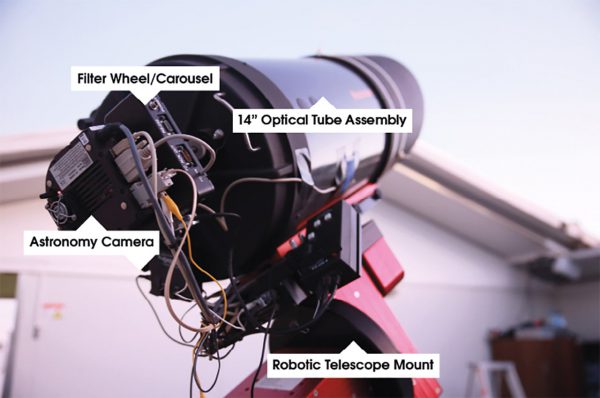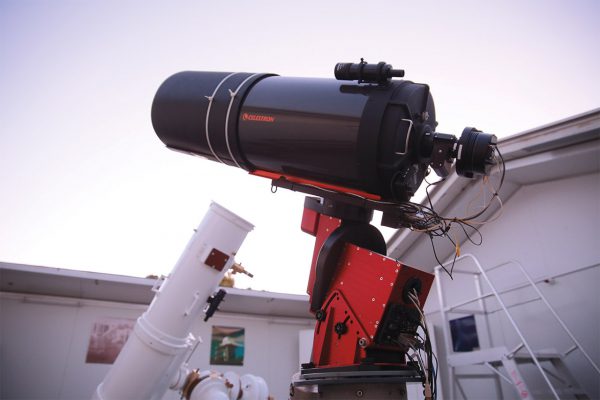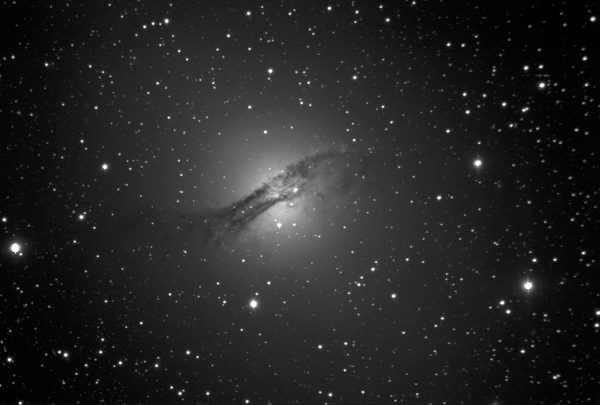
Perth Observatory’s R-COP telescope is part of the Skynet Robotic Telescope Network, which was established by the University of North Carolina at Chapel Hill in 2004. With at least 20 telescopes, the network is used for both outreach and research by scientists, amateur astronomers, and students around the world.
R-COP is an abbreviation that stands for Remote Telescope Partnership: Clarion University – Science in Motion, Oil Region Astronomical Society, and Perth Observatory. The R-COP telescope is equipped with a Paramount ME telescope mount, a Celestron C14 optical tube, an SBIG ST-10XME astronomy camera, an assortment of photographic filters, an operations PC, a focuser, and connectivity devices.
On average, R-COP captures approximately 25,000 images each year and about 1GB of images per operational night. The Visitor Observing Facility (VOF) where the R-COP telescope is located is equipped with automatic weather monitoring equipment that opens the roof of the observatory only when the conditions are safe and clear.
Originally established to observe gamma-ray bursts (GRBs), the Skynet Robotic Telescope Network quickly expanded its focus to a wide range of astronomical phenomena. If a GRB is detected by satellites and the weather is suitable, the R-COP telescope will instantly move to capture images of the event.
As of April 1st, 2016, Skynet has published 56 papers and 350 official observing reports, showcasing the scientific impact of this powerful network of telescopes.








